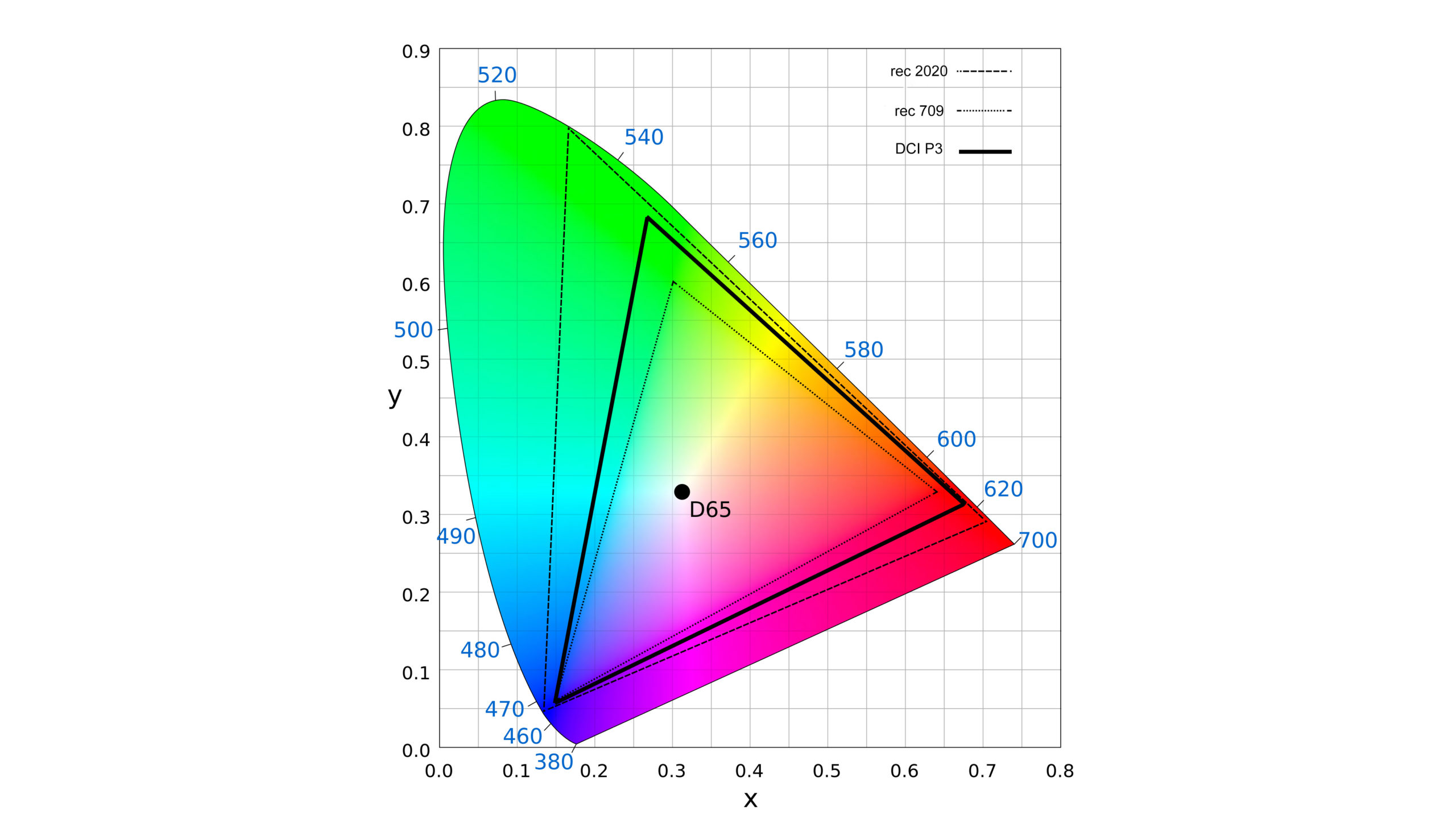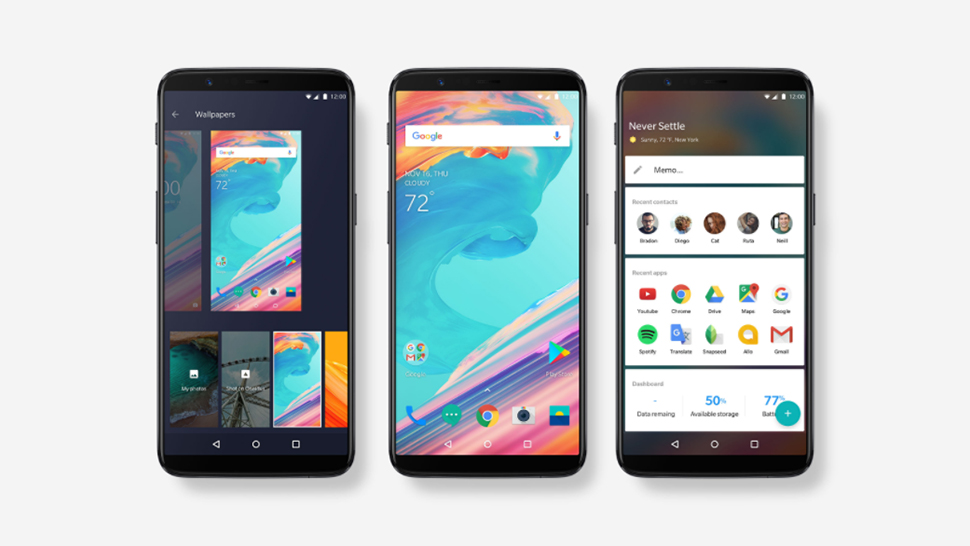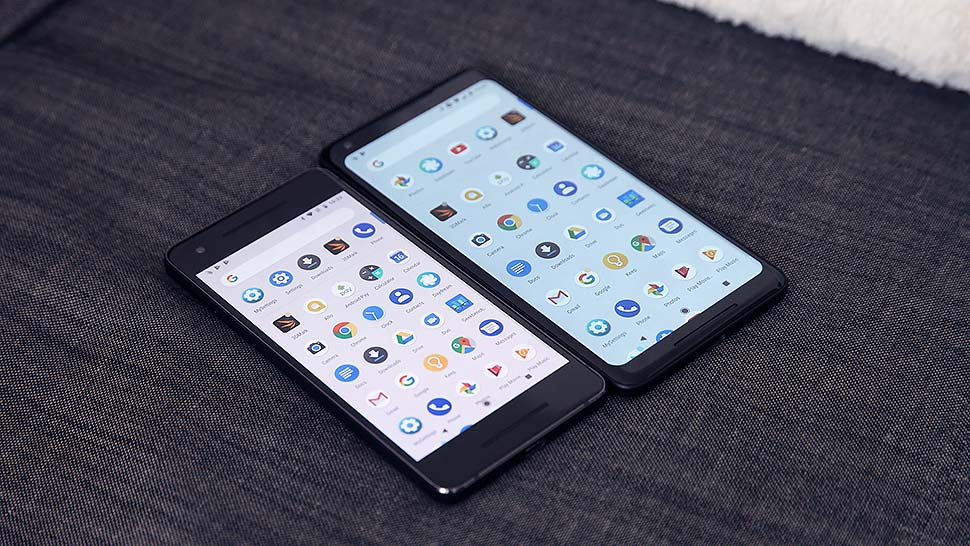The OnePlus 5T launched with a choice of five colour calibration options; Google has been pushed to add an extra colour mode to the Pixel 2 XL; while DisplayMate says the iPhone X manages colours better than any other phone. So why are colours on smartphone displays suddenly an issue? Here’s what you need to know whether you’re tweaking your own phone or looking to buy a new one.
Part of the reason we’re all talking about colour management more than ever before is because of the gradual shift from LCD (Liquid-Crystal Display) screens in smartphones to OLED (Organic Light-Emitting Diode) displays: both have existed for some time, but OLED is becoming more dominant, with Apple and LG both making the switch this year.
We won’t go into the pros and cons of LCD vs OLED again here – we’ve already written about it in depth before — but in terms of colour management you need to know that OLED typically offers a wider gamut (or range) of colours, and that in turn usually means more saturated colours out at the extremes of the colour palette.
That’s led to a conflict between the need for the bright, vivid colours that most of us prefer our smartphones, and the need for colours that actually represent what’s out in the real world. Most of us like a screen to pop, but natural colours are usually preferable if you’re using your phone to flick through photos or shop online for a sweater in a particular shade.
That’s why more and more phones are introducing multiple colour modes, similar to the modes you deal with on your TV, but before you can understand which mode is best for any given scenario you need to understand colour gamuts and the related (but technically very different) colour spaces.
Colour spaces and colour gamuts

Three of the more common colour spaces found in handsets and TVs today.
Colour on phones, monitors, and other devices is controlled by two very closely related concepts, colour space and colour gamut. In fact they’re so closely related, they’re often talked about as being one and the same.
But they’re not!
A colour space is a specific way of organising colours. You’ve no doubt heard of some before, like sRGB, Adobe RGB, rec. 709, and DCI-P3. Colour spaces may be mathematically developed (as the ones previously mentioned are) or they can be more arbitrary, such as the Pantone colour space. Every colour space has a colour gamut, the actual range of colours within the space, which is why they’re so closely linked.
So in the same way that a box of crayons reduces all the colours of the universe to a certain selection, a colour space and its colour gamut do the same for images and displays (and in lots of other areas too). A wider gamut means more saturated colours, as it includes some of the more extreme-coloured crayons in its box.
However just because a display claims it can do a specific colour space does not mean it can produce the full colour gamut. An LCD and an OLED display might both be able to do DCI-P3, but the OLED, because it can produce more colours, has more crayons at its disposal and can thus reproduce the colours of the colour space more accurately.
In the past, most phone displays have come with just one, fixed, factory-set colour space and colour gamut, but a growing number are now adding extra modes, especially with the trend towards OLED displays. Apps and mobile OSes are becoming more aware of colour spaces at the same time.
Colour on your phone

Image: OnePlus
So how does this affect your phone? Various factors control what red, and blue, and green look like on your phone display, everything from the brightness setting, to the colour of the daylight you’re standing in, to the colour space (and colour gamut) set on the handset.
The Galaxy Note 8 is one example of a handset with multiple colour management options – Adaptive Display, AMOLED Cinema, AMOLED Photo, and Basic — which can be set by the user. If your phone of choice has options like these, you should find them somewhere inside the display settings; if not, they’re probably not available to you.
Each of these options changes the colour space and colour gamut used by the display. In the case of the Note 8, Basic matches up with the ubiquitous and long-standing sRGB colour space, originally developed by Microsoft and HP and currently used to create most consumer content. AMOLED Cinema, meanwhile, matches up with the newer DCI-P3 colour space, which is now being used for 4K content, and which has a 26 per cent larger colour gamut (that is, range of colours) than sRGB.
Other phones are following suit – the OnePlus 5T lets you choose between five modes, including sRGB and DCI-P3, while the iPhone X supports both sRGB and DCI-P3 too. Apple being Apple, the switching is done automatically in iOS, based on the needs of the app and the iPhone or iPad you’re using.
Android Oreo is the first version of Android to support colour spaces beyond sRGB, but only for apps that specifically request it. That’s one of the reasons you might have thought your Pixel 2 screen looked a little muted when you first got it. It might be capable of the larger DCI-P3 colour space, but its sticking with the more common, if less vibrant, sRGB.
Google is pushing out an update to let users force the wider DCI-P3 colour gamut for every app, but warns that this might make colours less accurate. In other words, some colours might get stretched into a colour space they weren’t configured for (so be weary when buying a sweater on your phone). In the meantime there’s Oreo Colorizer – it forces your Android 8.0 device to use a colour space with a wider colour gamut, and thus more saturated colours, on the whole.
Controlling display colour

Image: Sam Rutherford/Gizmodo
There’s one more factor to consider: colour calibration. This is the way the phone and its display have been engineered to show colour, and it involves several different factors, only one of which is the colour space setting we’ve just explained.
Read through a really in-depth review of a smartphone, and you’ll see references to its colour accuracy, often alongside mentions of the supported colour space and colour gamut – it’s basically whether the manufacturer got it right when trying to accurately represent colours in its chosen colour space.
So when a white looks different from one phone to the next, it’s not just the colour space to blame: it’s also how the display was made, and the choices made by its maker. DisplayMate likes to go all-in on colour accuracy measurements, and if you’re interested, it has some of the most detailed tests imaginable.
Manufacturers have introduced all kinds of proprietary tweaks to improve colour accuracy, though a lot of the time you won’t hear about them or see them in a list of specs (you’re far more likely to notice when something goes wrong).
As the DisplayMate experts point out, the onus is really on phone makers to create displays where colour gamuts can be managed to always show realistic colours, no matter what’s on screen, like the iPhone X does. If it needs to show something in the sRGB or DCI-P3 colour space — as set by the content or by the app – then it’s calibrated to be able to accurately reproduce it.
That said, as the long-running debate about the colour of a dress a couple of years ago proved, colour is also something of a personal choice: most of us just get used to whatever display we’re looking at, over time, accurate or not. Colour spaces, gamuts, and calibration are extra specs worth checking out before your next smartphone purchase – you’re going to be spending a lot of time looking at the screen.
